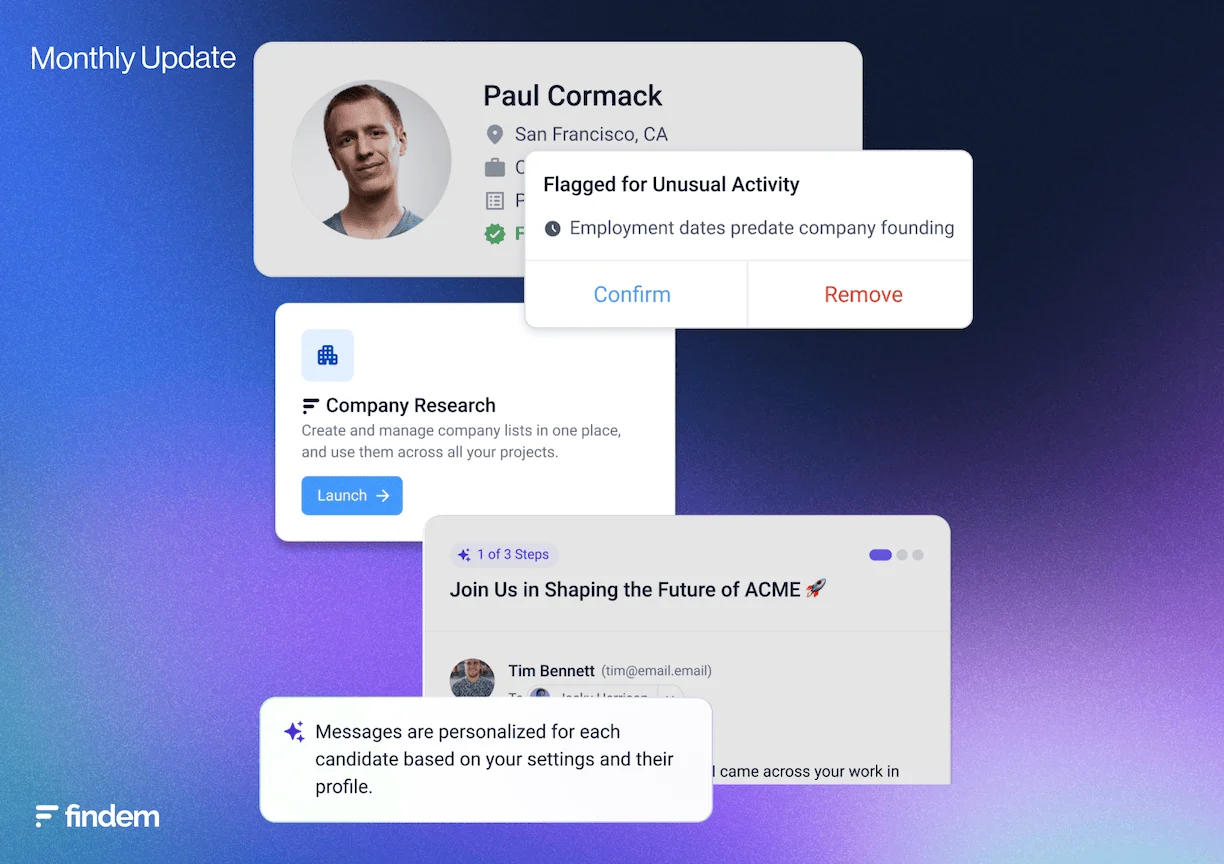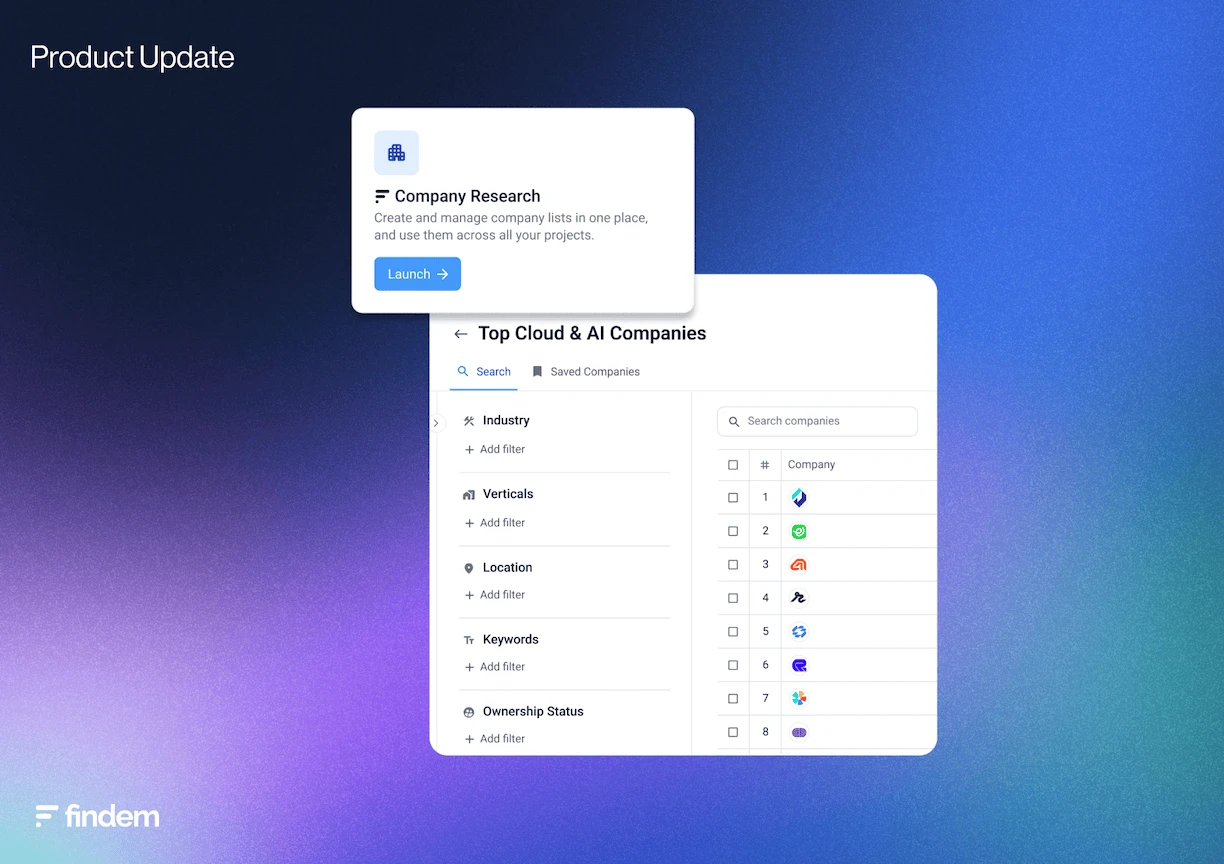.svg)

.svg)
AI is reshaping HR, but adopting it without guardrails can introduce ethical, legal, and reputational risks. For HR leaders, the mandate isn’t to slow down innovation, but to ensure AI is implemented responsibly, transparently, and in alignment with your people strategy.
You can adopt AI across talent acquisition and HR while minimizing exposure. Below are the major risks associated with AI in HR and how to mitigate them with confidence.
What are the risks that come with using AI in HR?
Let’s look at the core categories of risk and the steps leaders can take to prevent them.
Discrimination and bias
Challenge: Many generic AI models are built from public resumes, incomplete histories, or unverified data. These systems can unintentionally reinforce historic patterns — such as over-favoring candidates from prestigious universities — even when the organization is trying to broaden access and reduce inequity.
Findem’s response: Findem mitigates bias risk by anchoring decisions in expert-labeled Success Signals, grounded in verified human outcomes rather than proxies or prestige markers. By focusing on skills, experience trajectories, and measurable impact, the platform reduces reliance on subjective factors that introduce bias to support fairer, more defensible hiring.
Data privacy and security
Challenge: Some AI vendors scrape public data without consent, commingle customer datasets, or store personally identifiable information without proper controls. This creates significant exposure under GDPR, CCPA, and emerging state and global AI regulations.
Findem’s response: Findem securely integrates private, consented data within each customer’s environment and keeps each tenant’s data isolated. Customer data is never used to train global models, and the platform is fully compliant with GDPR and CCPA. This reduces organizational risk and helps talent operations maintain a clear, auditable data lineage.
Legal and compliance Issues
Challenge: New regulatory frameworks — from the EU AI Act to city-level laws like New York’s AEDT — are reshaping how HR is allowed to apply AI in hiring. Leaders must ensure AI systems are explainable, auditable, and aligned with evolving requirements across multiple jurisdictions.
Findem’s response: Findem’s attribute-based architecture enables clear traceability: you can see where data came from, why a profile is labeled a certain way, and whether criteria could introduce bias. This transparency supports internal governance, external audits, and enterprise-grade compliance expectations.
Fraud and candidate misrepresentation
Challenge: Fake profiles and inflated credentials are rising fast. Gartner predicts that by 2028, one in four candidate profiles worldwide may be fake. Governments have even documented sophisticated schemes to infiltrate companies using fabricated identities and experience.
Findem’s response: Findem detects anomalies and misrepresentation by verifying identities, companies, and experiences against 100,000+ sources at submission. Recruiters get plain‑language flags within Verified 3D candidate profiles and stay in control to review, suppress, or proceed.
Loss of human connection and empathy
Challenge: Automation has advanced to the point where candidate bots can apply to roles, respond to outreach, and even interview — all without a single human touchpoint. For many HR leaders, this is misaligned with the candidate experience and employer brand they want to create.
Findem’s response: Findem does not aim to automate human judgment out of the process. Its domain-specific approach uses AI to remove the manual tasks that block connection, not to replace the relationship. Recruiters and hiring teams regain time to engage meaningfully with candidates.
How do you mitigate the risks of using AI in HR?
AI can transform HR, but only if it’s grounded in verified data, transparent logic, and thoughtful human oversight. To reduce risk and build responsible AI maturity, HR leaders should:
- Establish internal AI governance frameworks with clear ownership across HR, Legal, and IT.
- Use explainable, expert-labeled, company-specific AI, avoiding generic models that introduce bias.
- Audit models regularly for disparate impact, drift, and accuracy.
- Train teams on responsible and ethical AI use, including what AI should and should not do.
- Partner with providers like Findem that prioritize compliance, context, and transparency over speed or black-box shortcuts.
To continue your journey to ethical AI usage, learn more about Security in AI and Governance of AI in human resources.


.svg)








